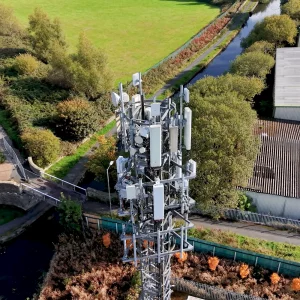Sponsored Links
Point Topic Calls for Standardisation of Next Gen UK Broadband
Posted: 28th Jan, 2010 By: MarkJ
 Analyst firm Point Topic has warned that it will be difficult for the government to strike the right balance of investment in Next Generation Broadband Access (NGA). In particular they highlight the dangers of having a patchwork with many individual players and have supported calls for a more standardised approach.
Analyst firm Point Topic has warned that it will be difficult for the government to strike the right balance of investment in Next Generation Broadband Access (NGA). In particular they highlight the dangers of having a patchwork with many individual players and have supported calls for a more standardised approach.Annelise Berendt, NGA analyst with Point Topic, said:
"Products for NGA are too important to be left to the network operators. There are too many challenges to leave it to lots of individual players, each doing their own thing. On the other hand, if we left the whole product set to be defined by BT that would really limit competition.
How the market is regulated is extremely important. Evidence shows that too much dependence on infrastructure competition, essentially wires to premises, leads to slow growth as in the UK in the 90’s and the US today. On the other hand, too much focus on service competition stifles investment in new networks. It’s a balancing act and we can’t rely on commercial organisations to follow policies which will maximise the benefits to society as a whole.
Ofcom in particular faces a significant challenge. It has to help new entrants to climb the investment ladder without compromising choice, without stifling competition, and without mortgaging the future of the UK’s newest utility."
"Products for NGA are too important to be left to the network operators. There are too many challenges to leave it to lots of individual players, each doing their own thing. On the other hand, if we left the whole product set to be defined by BT that would really limit competition.
How the market is regulated is extremely important. Evidence shows that too much dependence on infrastructure competition, essentially wires to premises, leads to slow growth as in the UK in the 90’s and the US today. On the other hand, too much focus on service competition stifles investment in new networks. It’s a balancing act and we can’t rely on commercial organisations to follow policies which will maximise the benefits to society as a whole.
Ofcom in particular faces a significant challenge. It has to help new entrants to climb the investment ladder without compromising choice, without stifling competition, and without mortgaging the future of the UK’s newest utility."
Point Topic suggests that the "glue to pull these potential products together" and to ease their implementation is standardisation. A co-ordinated approach is paramount for the financial viability of NGA networks, they claim. Indeed this was a key recommendation of the earlier Caio Review.
However it should be pointed out that the need for such standards, especially between different methods of deploying and accessing fibre optic broadband networks, is not one lost on individual players.
The i3 Group in particular, which is rolling out a 100Mbps dark fibre network to cover Bournemouth, Dundee and many other places, has already proposed an open access platform. It's one that could theoretically be adapted to interconnect with other infrastructure and services too.
Search ISP News
Search ISP Listings
Search ISP Reviews
Latest UK ISP News








Cheap BIG ISPs for 100Mbps+
150,000+ Customers | View More ISPs
Cheapest ISPs for 100Mbps+
Modest Availability | View More ISPs
Latest UK ISP News
Helpful ISP Guides and Tips
Sponsored Links
The Top 15 Category Tags
- FTTP (6719)
- BT (3862)
- Politics (3033)
- Business (2734)
- Openreach (2628)
- Building Digital UK (2486)
- Mobile Broadband (2434)
- FTTC (2132)
- Statistics (2101)
- 4G (2062)
- Virgin Media (1997)
- Ofcom Regulation (1761)
- 5G (1692)
- Fibre Optic (1586)
- Wireless Internet (1581)
Sponsored
Copyright © 1999 to Present - ISPreview.co.uk - All Rights Reserved - Terms , Privacy and Cookie Policy , Links , Website Rules































